Ball Pythons: Gentle Giants of the Reptile World
Ball pythons, scientifically known as Python regius, have earned their reputation as the gentle giants of the reptile world. These fascinating snakes are among the most popular pet reptiles globally, cherished for their calm temperament and relatively manageable care requirements. Whether you’re a seasoned reptile enthusiast or considering your first snake, understanding the world of ball pythons opens doors to one of nature’s most intriguing creatures.
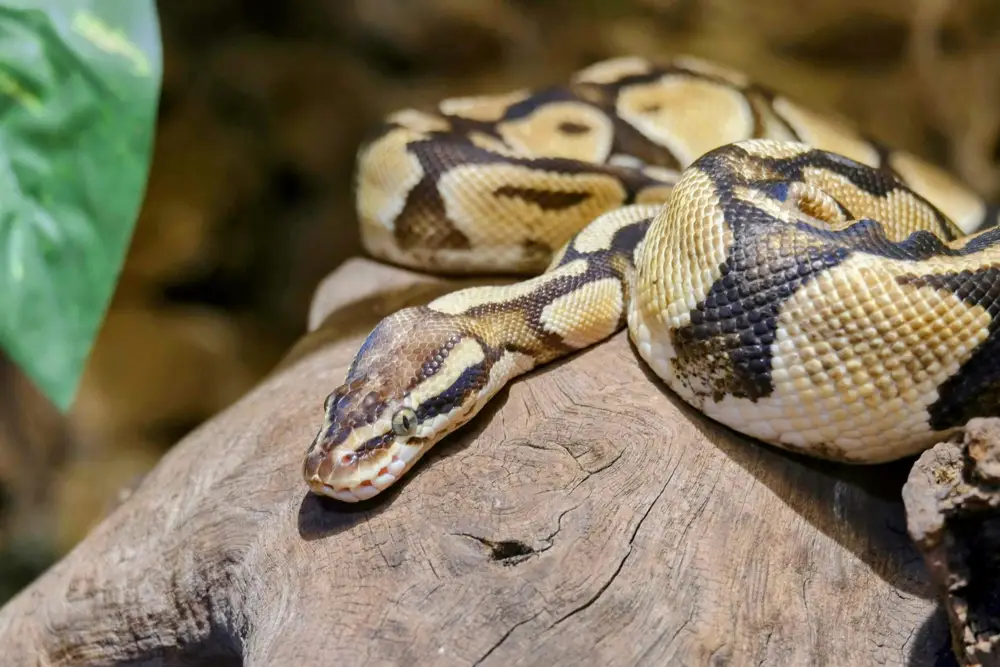
What Are Ball Pythons?
Ball pythons are a species of non-venomous constrictor snake native to West and Central Africa. Their name derives from their defensive behavior of curling into a tight ball when threatened, with their head protected at the center. This natural instinct has made them beloved among reptile enthusiasts, as they rarely attempt to bite and prefer retreat over confrontation.
These snakes belong to the Pythonidae family and are one of the smaller python species, making them ideal companions for both novice and experienced reptile keepers. Their manageable size, combined with their docile nature, has propelled them to fame in the reptile pet trade, with over three million exported from Africa over the past 50 years.
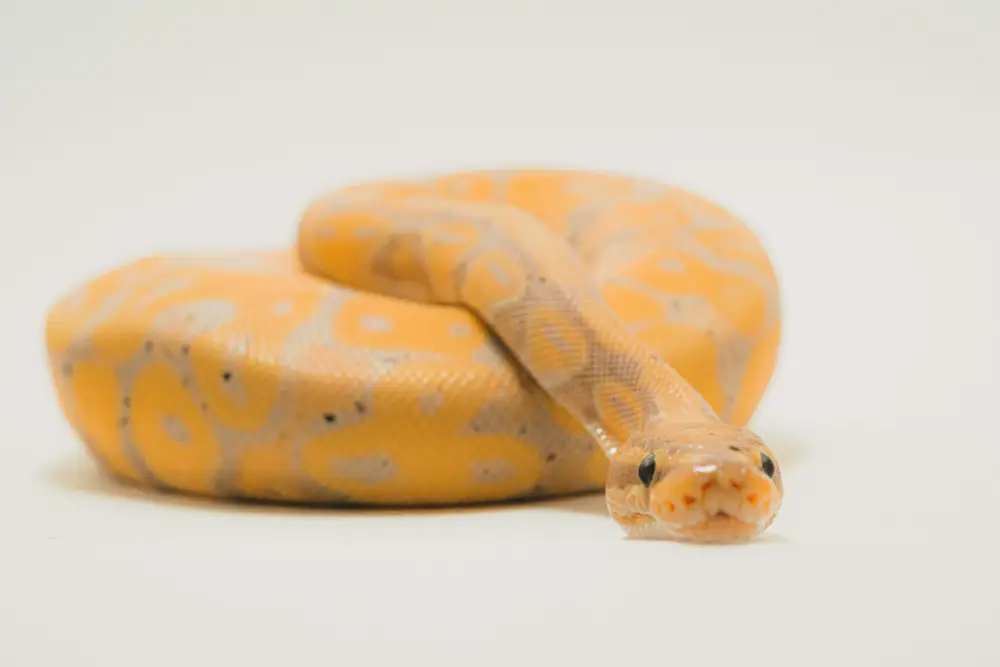
Physical Characteristics
Ball pythons display several distinctive physical features that make them easily recognizable:
Size Features
- Adult Length: Typically 2-5 feet (0.6-1.5 meters), with females generally being larger than males
- Weight: Usually 2-4 pounds (0.9-1.8 kg)
- Growth Rate: Slow growers, reaching adult size around 3-5 years
- Head: Distinct from neck, triangular shape
- Eyes: Vertical pupils characteristic of nocturnal hunters
- Scales: Smooth and shiny, arranged in overlapping patterns
- Tail: Long and muscular, used for climbing and anchoring
- Base Color: Black or dark brown background
- Pattern: Light brown or gold dorsal blotches that aid in camouflage
- Belly: White or cream-colored underside
- Unique Patterns: Each ball python has distinct markings, much like human fingerprints
- Albino: Lacking melanin pigment
- Pied: Irregular white patterning
- Spider: Web-like pattern overlay
- Mojo: Light brown with reduced pattern
- Countries: Senegal, Guinea, Nigeria, Ghana, Togo, Benin, and other West and Central African nations
- Terrain: Grasslands, savannas, and sparsely wooded areas
- Climate: Tropical to subtropical regions
- Temperature Range: 75-85°F (24-29°C) daytime
- Humidity Levels: 50-70% relative humidity
- Shelter: Mammal burrows, termite mounds, rock crevices, fallen logs
- Activity: Primarily terrestrial, though they may climb trees occasionally
- Behavior: Most active during nighttime hours
- Defensive Ball Formation: Their signature protective position, which gives them their name
- Ambush Predators: Hunt primarily at night using stealth and constriction
- Terrestrial Preference: Spend most time on ground
- Solitary Nature: Encountered alone, not in groups
- Calm Demeanor: Rarely aggressive toward humans
- Primary Prey: Small mammals and birds
- Occasional Prey: When available, lizards and amphibians
- Feeding Frequency: Every 7-14 days for juveniles, monthly for adults
- Hunting Method: Constriction after ambush
- Food Size: Prey should not exceed snake’s widest body section
- Feeding Schedule: Once every 1-2 weeks for adults, weekly for juveniles
- Food Type: Pre-killed rodents (frozen-thawed recommended for safety)
- Supplements: Not typically required with proper prey
- Important: Always feed pre-killed prey to prevent potential injuries
- Hatchlings: 10-gallon tank minimum
- Adults: 40-gallon tank minimum (general guideline for an adult)
- Length: Should accommodate the snake’s length completely
- Heat Source: Under-tank heater plus basking lamp
- Thermometer: Digital devices for temperature monitoring
- Thermostat: Automatic temperature control
- Substrate: Aspen shavings, cypress mulch, or reptile carpet
- Hiding Spots: At least two (warm and cool sides)
- Water Dish: Large enough for soaking
- UVB Lighting: While not strictly necessary, low levels can be beneficial
- Basking Area: Around 90°F (32°C)
- Cool Side: Around 80°F (27°C)
- Maintain Gradient: Essential for proper thermoregulation
- Target Range: 50-60% humidity
- Shedding Period: Increase humidity to aid in proper shedding
- Monitoring: Use digital hygrometer
- Methods: Mist tank walls, provide humid hides
- Daily: Check temperatures, observe snake behavior
- Weekly: Clean water dish, spot-clean substrate
- Monthly: Complete enclosure cleaning and substrate change
- Ongoing: Monitor shed cycles and feeding responses
- First-time snake owners: Easy temperament and care
- Experienced keepers: Beautiful morphs and breeding projects
- Families: Generally gentle and non-aggressive
- Limited-space situations: Compact adult size
- Gentle temperament: Rarely aggressive, calm demeanor
- Manageable size: Won’t outgrow most households
- Relatively simple care: Basic heating and feeding requirements
- Variety of morphs: Hundreds of color/pattern options available
- Long lifespan: Up to 30 years with proper care, some reaching over 40 years
- Feeding issues: Some pythons may fast for extended periods
- Heat requirements: Need precise temperature control
- Space requirements: Need adequate terrarium space
- Commitment: Long-term pet requiring decades of care
- Initial cost: Enclosure setup requires significant investment
- Active behavior: Responsive to handling
- Clear eyes: No retained eyecaps from shed
- Smooth scales: Shiny and intact coating
- Good appetite: Regular feeding responses
- Clean nostrils: Clear breathing passages
- Symptoms: Wheezing, bubbles from mouth/nose
- Cause: Poor temperature/humidity management
- Treatment: Veterinary care required immediately
- Symptoms: Partial shed remaining on body
- Cause: Low humidity levels
- Treatment: Increase humidity, provide soak baths
- Symptoms: Prolonged fasting periods
- Cause: Stress, improper temperatures, seasonal cycles
- Treatment: Check husbandry parameters, consult veterinarian if lengthy
- IUCN Status: Least Concern (not endangered currently)
- Population: While not endangered, populations face challenges
- Main Threats: Habitat loss and hunting for skin trade
- Captive Population: Stable and thriving in captivity
- Source Responsibly: Choose pets from reputable breeders who prioritize ethical practices
- Support Conservation: Contribute to habitat protection efforts
- Educate Others: Share knowledge about responsible reptile ownership
- Health Focus: Ensure snake welfare over aesthetic preferences
- Benefits: Healthier, better acclimated to captivity
- Conservation Support: Reduces pressure on wild populations
- Availability: Wide selection of morphs available
- Reliability: Consistent temperament and health
- Incubation: Females coil around eggs and shiver to generate heat
- Maternal Instinct: This protective behavior is relatively rare among snake species
- Development: Incubation temperature can influence hatchling traits
- Captive Lifespan: Up to 30 years, with some individuals reaching 40+ years
- Wild Lifespan: Generally shorter due to predation and environmental challenges
- Long-term Commitment: Ownership requires decades of dedicated care
- Ancient Lineage: Pythons have existed for over 50 million years
- Temperature Dependence: Incubation temperature can influence hatchling traits
- Morph Market: Some rare morphs can command thousands of dollars
- Cultural Significance: Often featured in African folklore and traditions
- Research Value: Used in medical research for respiratory studies
- Pet Trade Scale: Over 3 million exported from Africa over 50 years
- Unique Patterns: Each individual has distinct markings like human fingerprints
Body Structure
Color Variations
The wild-type ball python features:Over decades of selective breeding, hundreds of color and pattern morphs have been developed, including:
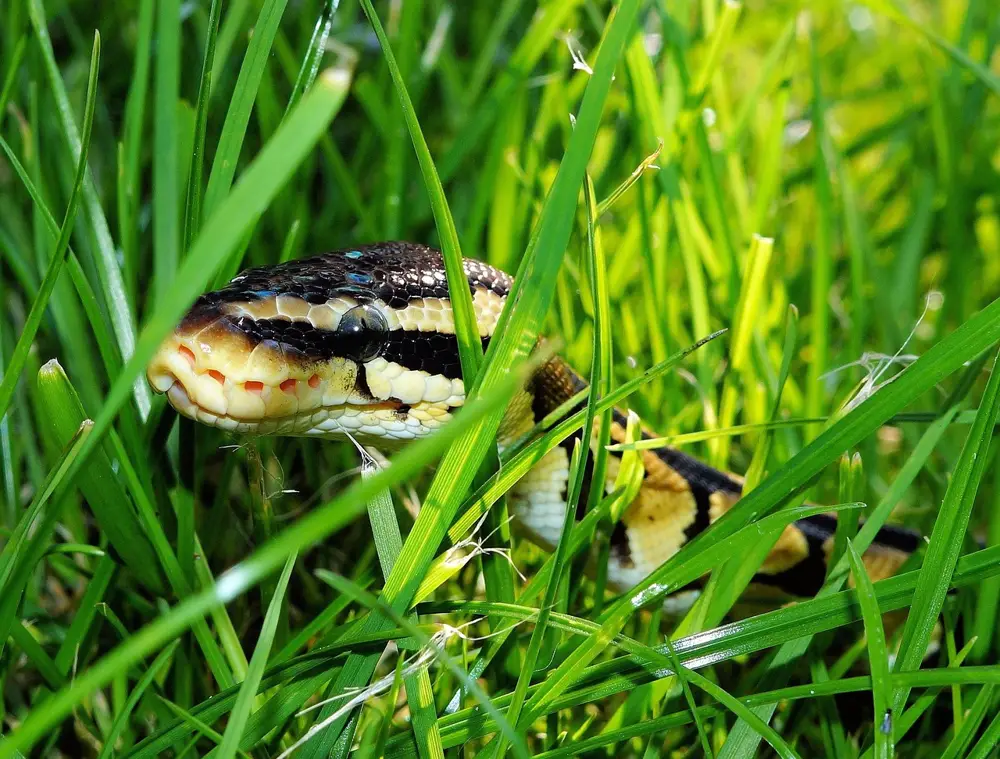
Natural Habitat and Behavior
Geographic Distribution
Ball pythons inhabit diverse environments across Africa:Habitat Characteristics
Behavior Patterns
Ball pythons exhibit several fascinating behavioral traits:Diet and Feeding Requirements
Natural Diet
In the wild, ball pythons consume:Captive Feeding Guidelines
For pet ball pythons: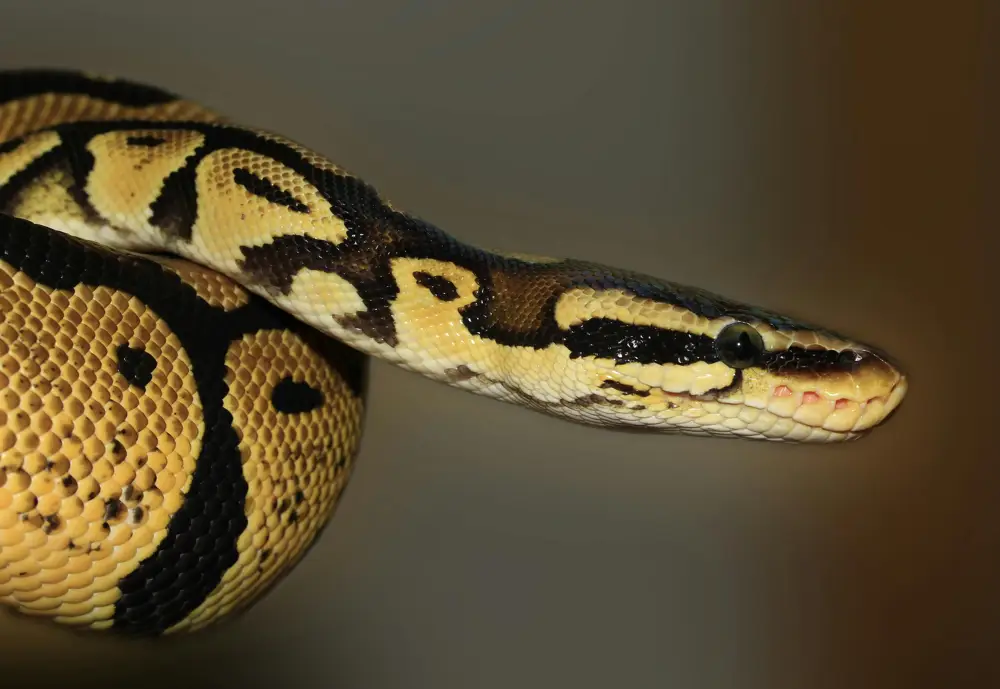
Care Requirements for Pet Ball Pythons
Housing Setup
Enclosure Size:Essential Equipment:
Temperature and Humidity
Temperature Zones:Humidity Management:
Maintenance Schedule
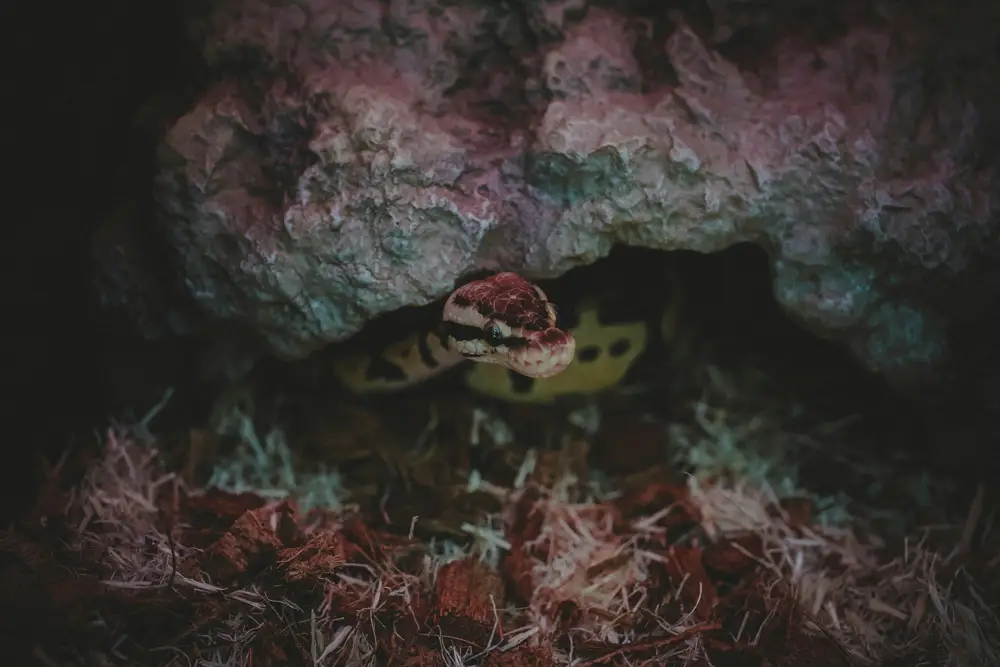
Ball Pythons as Pets
Suitability Assessment
Ball pythons make excellent pets for:Pros of Ball Python Ownership
Considerations and Challenges
Health and Common Issues
Signs of Healthy Ball Python
Common Health Problems
Respiratory Infections:Stuck Shed:
Feeding Refusals:
Important Note
Always ensure your ball python has access to fresh water and maintain cleanliness in their enclosure to prevent infections.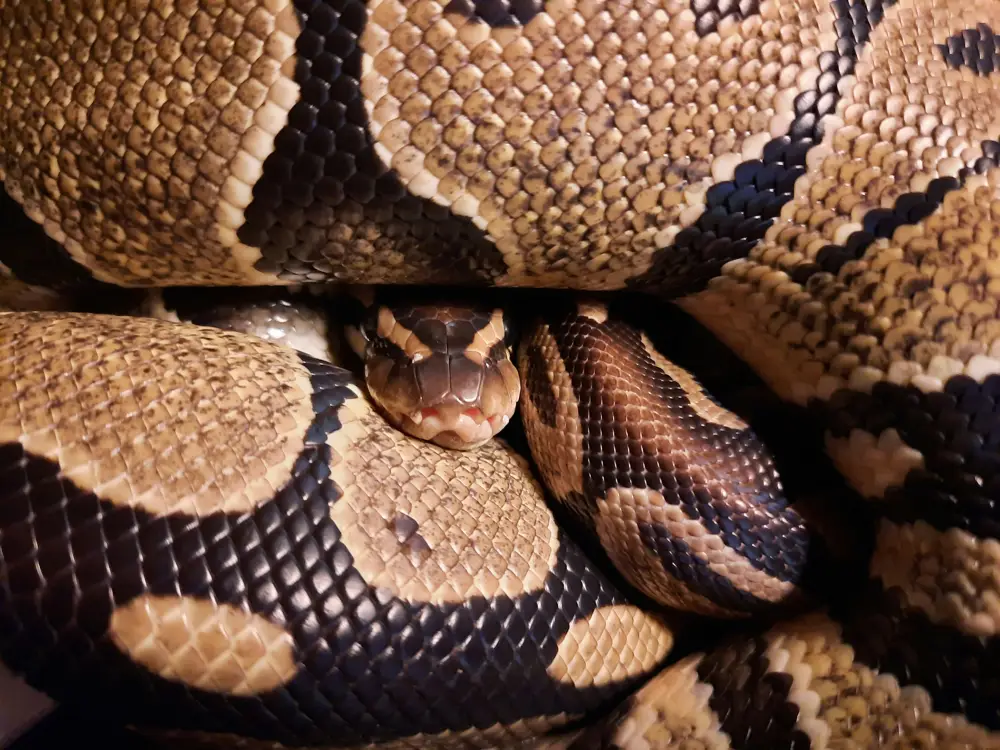
Conservation Status and Ethical Considerations
Wild Population Status
Ethical Pet Ownership
Given that over three million ball pythons have been exported from Africa over the past 50 years, it’s crucial to:Captive vs. Wild
The vast majority of pet ball pythons are captive-bred:Reproduction and Life Cycle
Breeding Behavior
Female ball pythons lay clutches of 6-10 eggs, demonstrating remarkable maternal behavior:Life Span Considerations
Interesting Facts About Ball Pythons
UVB Lighting Considerations
While not strictly necessary for survival, providing low levels of UVB lighting can be beneficial for ball pythons’ overall health and wellbeing. This is becoming increasingly recognized in modern herpetoculture.
Conclusion
Ball pythons represent one of nature’s most successful adaptations to captive care, combining striking beauty with gentle temperament. Their popularity among reptile enthusiasts is well-deserved, offering beginning and experienced keepers alike the opportunity to experience the fascinating world of snakes in a manageable package.
Whether you’re drawn to their incredible variety of color morphs, their patient and calm demeanor, or simply their status as one of nature’s most elegant predators, ball pythons offer something for every reptile enthusiast. Remember, successful ball python keeping requires commitment to proper husbandry, appropriate veterinary care, and lifelong dedication to your scaly companion’s wellbeing.
With over three million individuals exported from Africa over the past 50 years, responsible ownership and sourcing from ethical breeders help ensure the continued success of this beloved species in captivity while protecting wild populations.
For more fascinating insights into the reptile world, explore our reptiles category and learn about other amazing creatures like the Komodo dragon. Dive deeper into animal care with our guides on animal superpowers and discover the wonders of nature’s most adapted creatures.
FAQ about Ball Pythons
What are ball pythons?
Ball pythons (Python regius) are small to medium-sized non-venomous constrictor snakes native to West and Central Africa. They’re named for their defensive behavior of curling into a tight ball when threatened, with their head protected in the center. Also known as royal pythons.
Are ball pythons good pets?
Yes, ball pythons are excellent pets for both beginners and experienced reptile keepers. They have gentle temperaments, manageable sizes, and relatively straightforward care requirements, making them one of the most suitable snake species for captivity.
How big do ball pythons get?
Adult ball pythons typically measure between 2 to 5 feet in length, with females generally being larger than males. They are considered small to medium-sized snakes compared to other python species.
What do ball pythons eat?
In captivity, ball pythons primarily eat appropriately sized rodents (rats or mice). It’s essential to feed them pre-killed prey to prevent potential injuries. Adults typically eat once every 1-2 weeks, while juveniles may eat more frequently.
How long do ball pythons live?
With proper care, ball pythons can live up to 30 years in captivity, with some individuals reaching over 40 years. In the wild, their lifespan is generally shorter due to predation and environmental challenges.
Are ball pythons venomous?
No, ball pythons are non-venomous. They subdue their prey through constriction rather than venom.
Can ball pythons be housed together?
It’s generally recommended to house ball pythons individually to prevent stress and potential aggression between individuals.
Do ball pythons require UVB lighting?
While not strictly necessary for survival, providing low levels of UVB lighting can be beneficial for their overall health and wellbeing.


